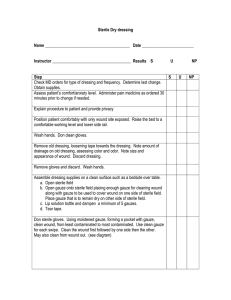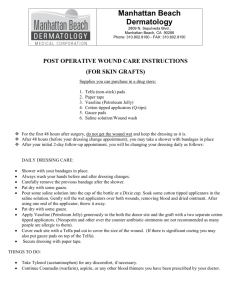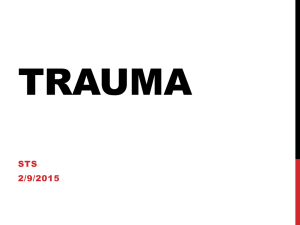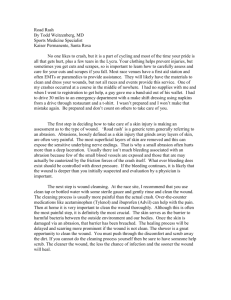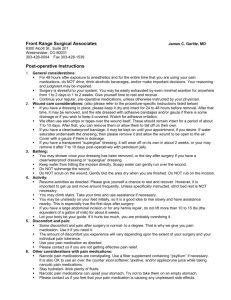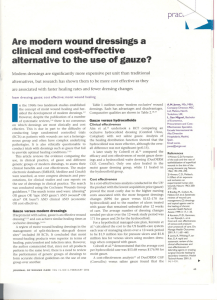Emergency - leap
advertisement
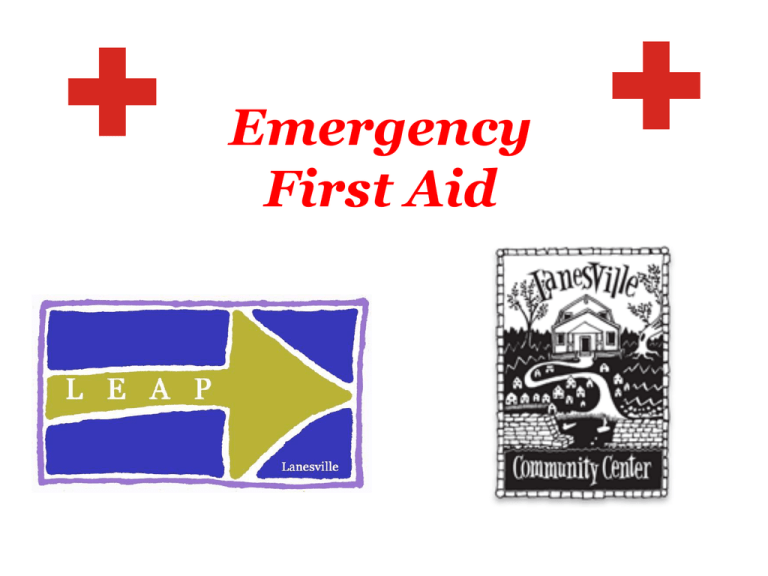
Emergency First Aid I.C.E. your cell phone! I.C.E. your refrigerator! Which phone to use? Taking a Pulse Radial (wrist) Pulse Use Fingers to check wrist pulse Blood Vessels in the neck Taking a Pulse Carotid (neck) pulse Just enough light pressure to feel the pulsation Count the number of times you feel the pulsation in a specific amount of time So what’s normal? 60-100 People who are very athletic or who are on heart medications may have slower heart rates (less than 60) Note to self: Any pulse is better than no pulse! No pulse or unresponsive? Start CPR What IS a heart attack? What IS a heart attack? The Heart pumps blood to every organ in the body, including itself! A heart attack is when there is a blockage of the blood flow to the heart itself This causes damage to the heart and limits its ability to pump blood to the rest of the body What IS a heart attack? How can I help? Heart Attack • Have the person lie or sit down – avoid exertion • If they take nitroglycerin, get it for them and help them place it under their tongue • Call 911 • If they are awake, have them chew an aspirin (prevents clot forming) What is a stroke? A stroke is the result of lack of blood flow to a portion of the brain “brain attack” A stroke is a blockage of blood to the brain (ie. brain attack) Types of Stroke Symptoms of stroke • Weakness, clumsiness, or numbness on one side of the body • Blurry, dimming, or no vision • Difficulty swallowing, talking, or comprehending others • Dizziness, falling, or loss of balance • Severe or unusual headache Facial droop Arm drift How can I help? Stroke • Call 911 right away – time is critical • Note what time the symptoms first started • Do not give them anything to drink Choking • • • • • Unable to speak Difficulty breathing Grips throat Skin turns bluish May lose consciousness Choking Choking • • • • • EMERGENCY!! Act quickly Attempt Heimlich Have someone call 911 DO NOT GIVE THEM SOMETHING TO DRINK Foreign body in “throat” (esophagus) Esophageal Blockage • Drooling or spitting • Leaning forward • Pain in throat/chest Esophageal Blockage • • • • Not an emergency Can still talk Uncomfortable If they can’t swallow their saliva (drooling), they can’t swallow water! Head Injury When do I need to go to the hospital? • If I lost consciousness for more than a brief instance • If I can’t remember the 15 minutes before or after the injury • If I am on a blood thinner (coumadin, plavix) • If I have a bad headache or am vomiting • If I am sleepy, confused, or having trouble using my arms or legs If I go to the hospital, what should I bring? (what every ER doctor wants their patients to know!) • List of your medications/medical problems/medical records • Names of your doctors • One friend or family member (preferably a quiet and sober one) • A good book! Bee Stings • • • • • • Epipen right away if allergic Call 911 if allergic Pull stinger out as quickly as possible Cool compresses or ice Benadryl Zantac or tagamet Stinger Removal Ankle Sprain Ankle Sprain Ankle Sprain Treatment Cover tobacco with ace wrap or cotton dressing Ankle support Burns Burns First degree burn Second Degree burn How can I help? Burns • Clean skin with cool water • If skin not broken can use topical solarcaine • Don’t break blisters • Bacitracin to open areas • “Fluff” a gauze to absorb fluid and hold in place with a gauze “kling” or ace wrap Splinting Immobilize Broken Bones splinting Wound Care Soap and water +/-Topical antibiotic (bacitracin) Clean, dry dressing Wash daily, redress Keep it simple… 1. Wash with soap and water 2. Keep clean and dry 3. Seek help if it becomes red or angry looking (infected) Major Injuries Major Injury Issues • Bleeding – an immediate life-threatening problem -lie patient down -place clean gauze or towel over site of injury -apply direct, constant pressure -elevate the extremity -call 911 -collect tissue or missing parts, place in plastic bag Bleeding management Keep pressure on wound Hold gauze in place with circular dressing Other risks with major injuries: • Infection – If bleeding controlled, clean out wound with saline or water • Tetanus - Need tetanus shot within days if not up-todate • Nerve and muscle damage – Avoid additional damage to limb Amputated Parts • Rinse off debris (saline or water) • Wrap in dry clean gauze, put in dry plastic bag • Put plastic bag inside another plastic bag with ice and water – do not pack in ice • Remove any rings • Do not eat anything • No smoking Cuts and lacerations The Art of Bandaids Winged For large joints like knees and elbows Fingertip bandaid Home First Aid Supplies Protective Gloves Bandaids Peroxide • Excellent for removing blood from hair, skin, clothing Irrigation syringe Wound cleaning Topical antibiotic Gauze dressing to apply to wound Rolled gauze to hold dressing on Ace bandage or coban to hold everything in place Anchoring dressings Tape to secure bandages X Medications Pain medication Pain medication Anti-inflammatory Aspirin Chest pain Possible heart attack Allergic Reaction/Bee stings Epipen requires Prescription *check expiration dates Thermometer Hard to read Shears or scissors Cuts clothing off, cuts gauze Tweezer Steri-strips Benzoin Other possibilities: Summary • Use common sense – follow your instincts! • Do not give anyone having a medical emergency something to drink • Keep a list of medications, doctors, medical history readily available • I.C.E. your cell phone and refrigerator • Call 911 for chest pain, stroke symptoms, breathing problems, excessive bleeding Thank you for coming!!


